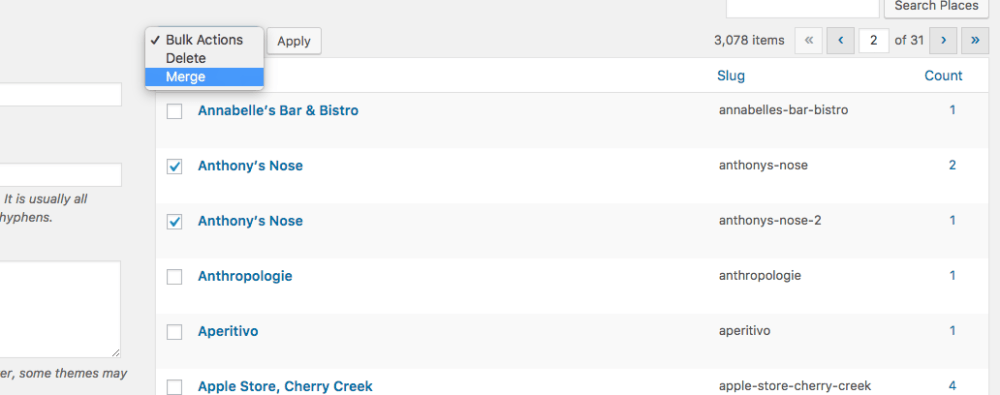I’ve been trying to make small improvements to the Keyring Social Importers package (and People & Places) that I maintain, and have made a number of them over the last few weeks. Here are some details of recent updates which you may have missed:
- Improved the labels being used for each taxonomy, so that you don’t get random mentions of “tags” in the WordPress UI.
- Improved the
add_place_to_post()method so that you can add multiple Places to a single Post. - Now exposing both the
peopleandplacestaxonomies via the REST API.
- Added a filter so that you can easily (and globally) disable downloading of full content for Instapaper articles.
- Made it easy to inject custom CSS for a specific importer.
- Added a Nest Camera service and importer. Including recent updates, it will download a snapshot from the specified camera(s) during the hour indicated, auto-tag it using the location of the camera, and also associate it with a Place if People & Places is co-installed.
- The Instagram importer now handles video posts properly, and will download the full video and embed it into your posts. Bundled a reprocessor to fix old posts, which would have previously been handled as image posts.
- Also made the Instagram importer link up People mentioned in captions (not just those who are properly tagged as being in a post).
- Fixed a bug in the Twitter importer which was mangling newlines. Added a reprocessor to fix it in old posts as well.
- Now exposing where a post was imported from in the REST API.
- Added Places support to the TripIt importer, which associates each post with Places for each airport flown through on that trip.
Keyring Social Importers has been updated in the WordPress.org plugin directory (version 1.7, or get it from Github) and you can get the latest version of People & Places from Github (still not an “official” plugin yet).
You can see most of them in action on my site, Dented Reality, which uses them to aggregate most of my online social activity. The People & Places data is not directly exposed yet, but you can see it in the REST API output.







